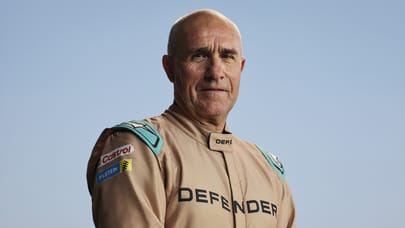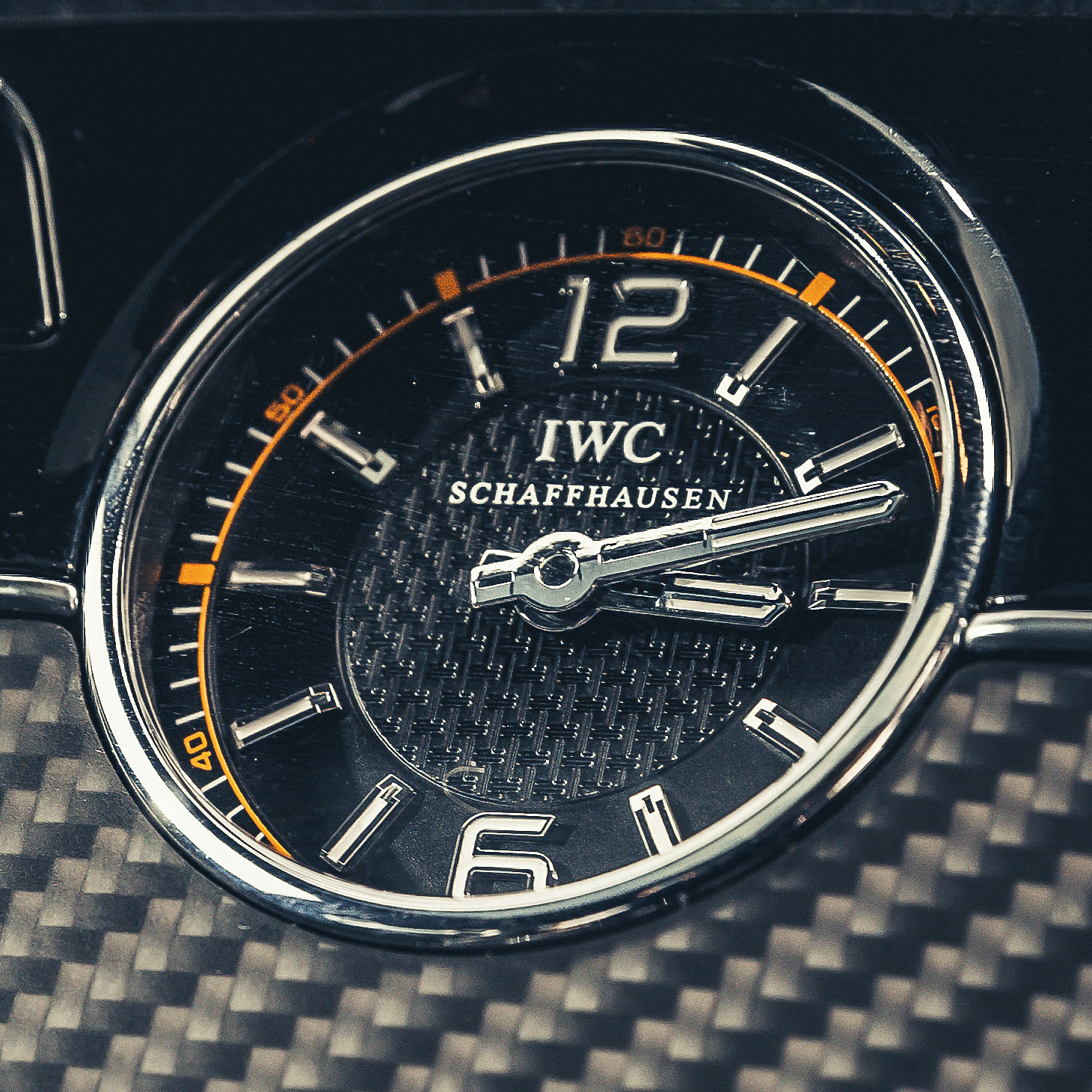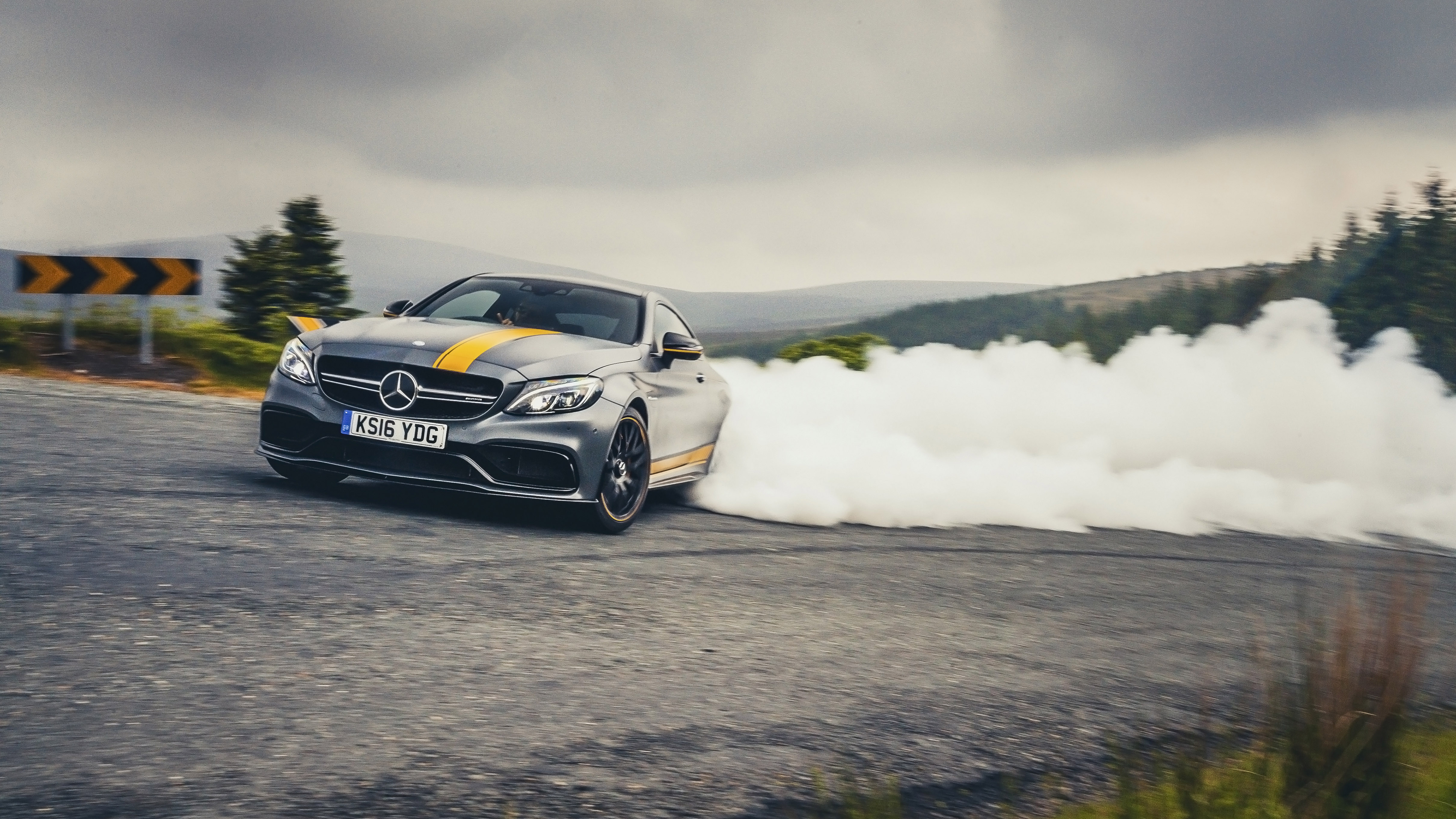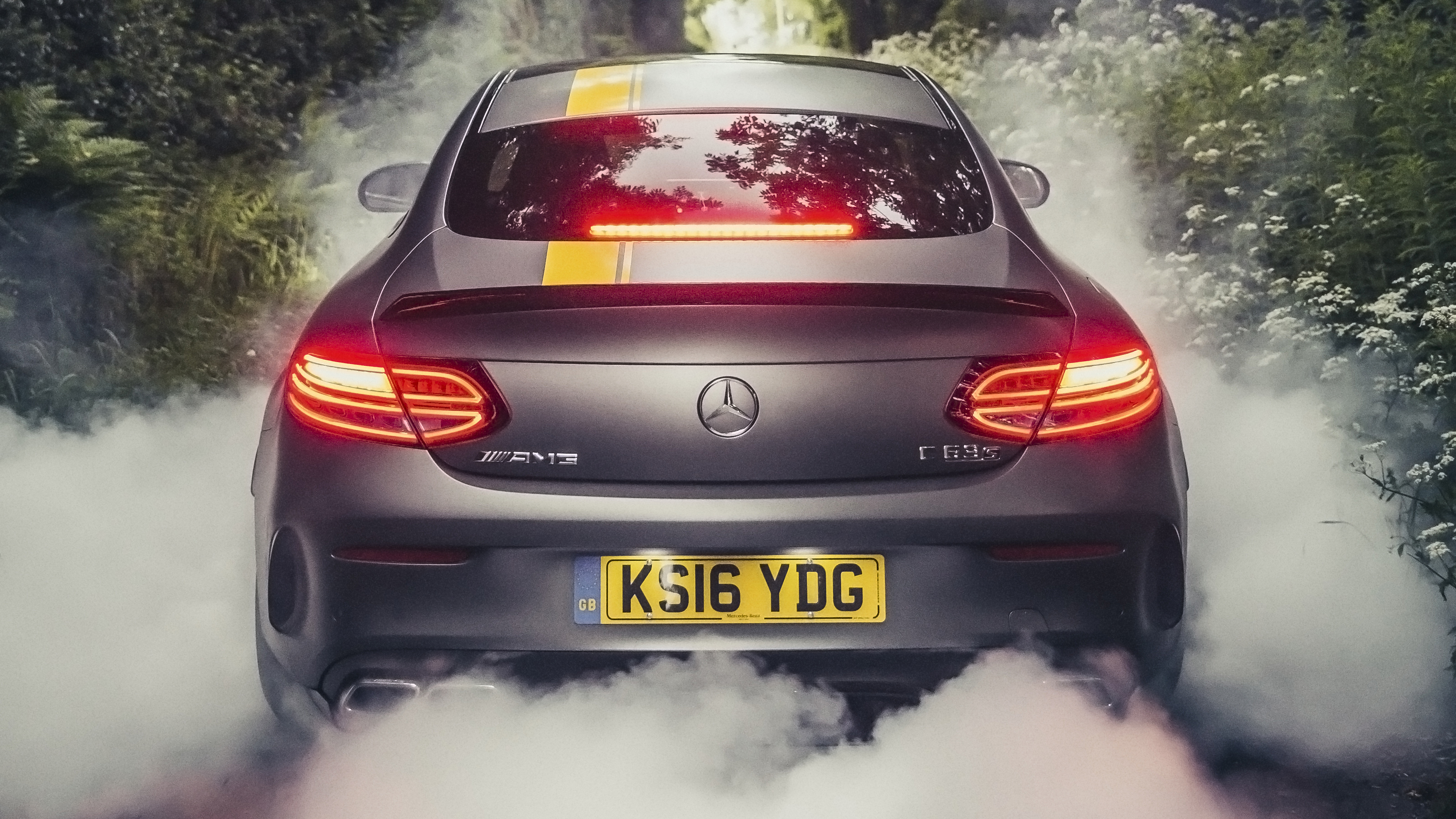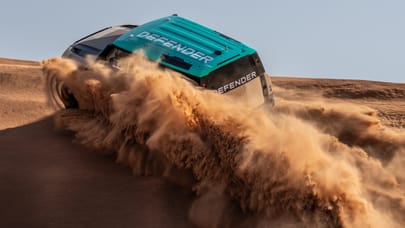
Hero Worship: retracing Merc's oldest racing win in a C63 AMG
Can a modern Mercedes super-coupe hold a candle to a racing car from 113 years ago?
Contrary to expectation, Ireland is sunny. Hot, Mediterranean-feeling heat, where you can feel your skin prickling with the expectation of a rosy glow. Except when it isn’t, which is when the rain cannons down like a tropical storm – fat, heavy raindrops blurring the landscape in a brief, vicious deluge. Bipolar weather: the eternal northern European conundrum.
We’re in the Wicklow Mountains National Park just south of Dublin, firing Mercedes-AMG’s newest Edition One C63S Coupe down narrow, single-track roads that really only barely qualify as such, the gorgeous Irish countryside laid out before us like God’s own patchwork quilt. It might be pretty, but this is not, it has to be noted, utopia for a fast car.
Words: Tom Ford
Photography: Mark Riccioni
This feature was originally published in issue 286 of Top Gear magazine.
No wonder Ireland produces such world-beating rally drivers, because the way that these roads work with their flaky cambers, startling mid-corner bumps and random narrowness blockaded with uncharitable lumps of rock, are the ultimate test of every dynamic parameter. Including the driver.
Merc-AMG’s newest, raciest Coupe is more than up to the test, but a large Mercedes lifting a wheel on a mid-corner bump before segueing happily into a gentle sweep of oversteer feels slightly more risky than it should, given the lack of run-off. But general hooliganism isn’t the point. We’re on the way to a tiny rural village called Athy, to begin a little adventure. An adventure that started 113 years ago.
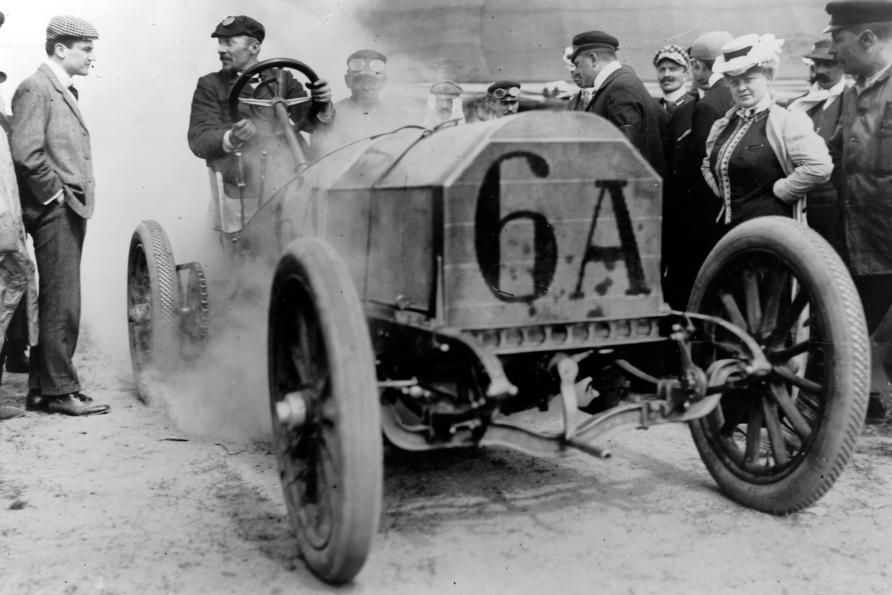
This is a story about two very fast Mercedes, a long-lost motor race and a man called Camille Jenatzy. A Belgian engineer, racing-car driver and adventurist who held the world land-speed record three times in the late 1800s – the last in January of 1899 when Jenatzy, at the wheel of his electric CITA 25 La Jamais Contente (The Never Satisfied), ran to 105.88kph.
Sounds painfully slow these days – it’s only about 66mph – but in reaching that milestone, Jenatzy not only made use of the world’s first purpose-built land-speed-record car, but became the first person to travel at more than 100kph (62mph). Suffice to say, he was a bit of a legend, willing to push boundaries for no reason than they were there to be given a decent shove.
But Jenatzy was also famous for his later racing exploits in piston-powered cars, most notably Mercedes-Benz’ contemporary Simplex in the Gordon Bennett Cup of 1903. Bear with me here, because this is all relevant. The Gordon Bennett Cup was established in 1899 by a fabulously rich American publisher called James Gordon Bennett, and it was a kind of forerunner to modern GP F1, except based on geography, before racetracks were invented and when Bernie Ecclestone was probably only middle-aged. Each country could enter three cars in each race, but they had to be entirely manufactured in their country of origin to excruciatingly exacting rules.
The winner of the previous year’s race then received the honour of hosting the following year, and so on. Which is where it gets interesting. Because in 1902, a rakish chap called Selwyn Edge won in a British-built Napier, meaning England got to be the next home nation. Except for one problem: back when the motor car was still considered impossibly new-fangled, road racing was illegal in England.
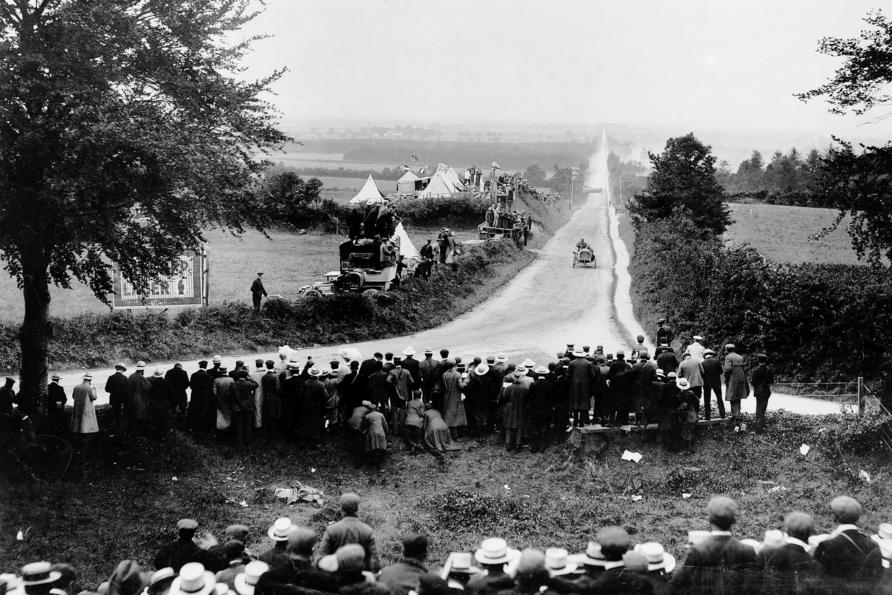
The British Isles was not to be defeated, mind. Ireland stepped up as a possible venue, and letters went out to MPs, peers, councils, railway companies... and eventually the cordial Irish changed their laws so the 1903 GB Cup could be hosted across the Irish Sea.
Top Gear
Newsletter
Thank you for subscribing to our newsletter. Look out for your regular round-up of news, reviews and offers in your inbox.
Get all the latest news, reviews and exclusives, direct to your inbox.
In honour of this, the British cars raced in Shamrock Green, which later became adopted as British Racing Green… but I digress. Jenatzy turned up to the startline on the Ballyshannon crossroads near Calverstown, County Kildare, in Mercedes’ most sporting model, a 9.2-litre, 60bhp four-cylinder Simplex – a car borrowed from a customer after a fire at the factory destroyed his 12.7-litre, 90bhp race-spec version – a car driven from Germany only the day before. And so began what can only be described as an epic motorsport moment.
Fast-forward to 2016, and the crossroads could be the same. Apart from new-fangled Tarmacadam and the weight of modern traffic, the views from the innocuous little intersection breathe life into the notion of the Emerald Isle. It’s very, very green. The roads are largely straight on the Gordon Bennett route – a nod to safety concerns when motorised transport was still very new – and consisted of a pair of loops.
Namely, a 52-mile circle that took in Kilcullen, Kildare, Monasterevin, Stradbally and Athy, and another that flickered 40 miles through Castledermot and Carlow before heading back to Athy, with three laps of the eastern and four laps of the western circuit. Back then, 327-odd miles of racing was as much about reliability as speed, and Jenatzy’s engine – developed by Maybach, no less – was well up with the pace, if not the power.
The modern AMG is something else altogether. With the 4.0-litre twin-turbo from the AMG GT, this wet-sumped V8 in S format manages 503bhp and 516lb ft – over eight times the power of Jenatzy’s Simplex. It weighs about 850kg more but still, in 1903, a car capable of 0–62mph (his world-land-speed record, don’t forget), in just 3.9 seconds and a top speed of 180+mph with the raised-limiter option engaged, would have seemed impossible. A thing of fantasy. And although it’s not painted German Racing White – Mercedes wasn’t associated with the colour silver until much later – this Edition One gets matte grey/green paint and yellow stripes. Racy enough.
Initially, Sport+ mode feels too stiff, but after a while, you realise that you just have to… drive a bit harder.
Ireland is the real challenge. Where Jenatzy and his competitors had closed roads marshalled by 7,000 police officers, club stewards and even army troops, the new, modern roads over a century later are largely policed by clotted traffic and less accommodating local law.
The smaller side roads shrink rapidly, swallowing down into single track in places, and are filled with the wayward mess of camber, bumps, potholes, and walled with thick hedges. Not the kind of place you’d want to be racing a car with wooden 12-spoke wheels like Jenatzy’s Simplex, and the kind of thing that you’d think would turn a very powerful four-seat coupe into a heaving, writhing nightmare.
But as we have been discovering, that’s simply not the case for the C63S two-door, because unlike the Simplex, you can change its character at the flick of a switch. Initially, Sport+ mode feels too stiff, but after a while, you realise that you just have to… drive a bit harder.
As with a lot of the more aggressive sports cars, the more pressure you put on the suspension – especially the rear set-up – the more compliant and useful it gets, and the Coupe feels much more than just a two-door C63S saloon.
The tracks are wider (73mm at the front and 46mm at the rear), and that rear suspension is an entirely bespoke multi-link arrangement that seems perfectly calibrated to want to keep the C63 floor-mounted. Yep, so Track mode really does get too much – even to the point that mid-corner bumps can have the car skipping – but there’s so much confidence that the whole thing never really feels especially sketchy.
Obviously you can skid about if you want to (516lb ft sets light to pretty much any tyre bonfire), but if you’re just wanting to maintain progress, then the C63 Coupe feels confident and competent. Friendly, even. Add to that an engine that plays a musical scale from distant, guttural thunder to stormy roar and a mine-deep delivery that never leaves you in the wrong gear, and this becomes an easy car to feel a connection with.
God knows what Jenatzy had to deal with. Where this modern Merc-AMG comes with carbon-ceramic brakes as standard – brakes that would, if not for seatbelts, smack your face into the steering wheel – the initial route north-east to Kilcullen and then south towards Carlow and back north-and-vaguely west to Athy would have tested both him and the car.
Brakes on a Simplex consisted of a hand-lever-operated set of drums on the back and a foot pedal that slowed down the chain drive’s intermediate driveshaft – meaning that simply bringing the car to a stop would need some careful co-ordination. Mechanically, everything was prone to overheating immediately, which led to water-cooled brakes (not a modern invention), and one assumes that brake fade could literally threaten one’s life.
The modern Merc-AMG equivalent suffers no such issues, and with the Irish countryside throwing up some particularly challenging situations for the suspension to deal with, it lends weight to the thinking that to go fast, first you need to be confident that you know how to stop.
In 1903, that kind of driving on these kinds of roads isn’t just good, it’s legendary.
It’s hard not to feel humbled by those who have gone before. This Merc has the ability to make the average driver good and the good driver even better. But it has modern safety architecture and lots of life-saving help – even if the systems are relatively unobtrusive. Jenatzy had a set of overalls, goggles and skill.
A competitor at the event reputedly commented afterwards: “Throughout the seemingly endless series of curves, Jenatzy kept his foot to the floor. He skidded at breakneck speed around the corners, often only narrowly missing the bordering walls in the process, as was shown by his skid marks. I could not imagine that he could keep up this daredevil driving style for very long.”
And yet he did. Jenatzy kept the hammer down, completing the very route we’re now driving on, at a scarcely believable average speed of 79.24kph. At 45mph, that’s faster than we manage it, even with 503bhp. Of course we had to stick to speed limits and were driving on a public road instead of a closed course, but still – in 1903, that kind of driving on these kinds of roads isn’t just good, it’s legendary.
It gave Mercedes-Benz its first-ever major international racing success, a tradition the likes of Hamilton and Rosberg are happily continuing. It was a victory that forever cemented Jenatzy’s relationship with Mercedes and reputedly caused him to comment that he “would die in a Mercedes-Benz”.
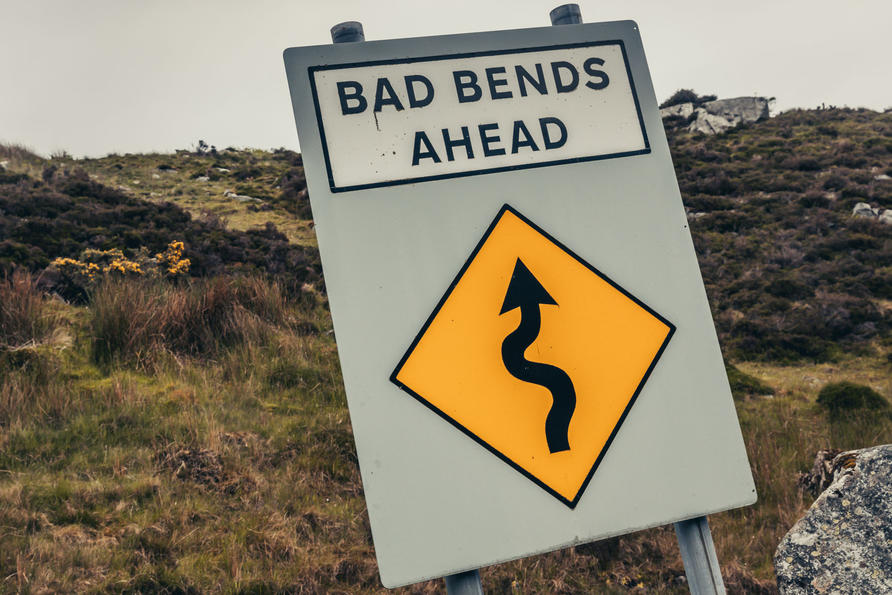
A throwaway comment that proved sadly prescient: according to the New York Times, on 8 December, 1913, Jenatzy was hunting with friends when he decided, somewhat unwisely, to imitate an animal while hiding behind some bushes. A bit of a daft joke, seeing as one of his party then promptly shot him, and he died while being transported to hospital in, you guessed it, a Mercedes.
But his legend lives on. It’s the reason we spent a happy few days thinking about those brave men and women back at the Big Bang of motorsport. Seeing what a century of progress has done to the motor car. And yes, it’s made them faster, and safer and more brilliant in every way.
In fact, I’d go so far as to say that Mercedes-AMG, with the C63S Coupe, is still making the best of the breed – I’d rather have this than, say, a BMW M3. But as it turns out, this is more than just a story about two fast Mercedes separated by a hundred years. It’s about the spirit of discovery.
Adventure? It’s all about comfort zones and doing something new. Pushing boundaries and yourself, but sometimes just finding a fresh perspective from the vantage of experience. Camille Jenatzy knew how to do exactly that, in a big way. More than a hundred years later, a good story about a man called Camille and a very fast Mercedes reminded me how to do it as well. Sometimes following in the footsteps of giants is humbling – and an adventure – in itself.
Trending this week
- Car Review
BMW 1 Series
- Top Gear's Top 9
Nine dreadful bits of 'homeware' made by carmakers






